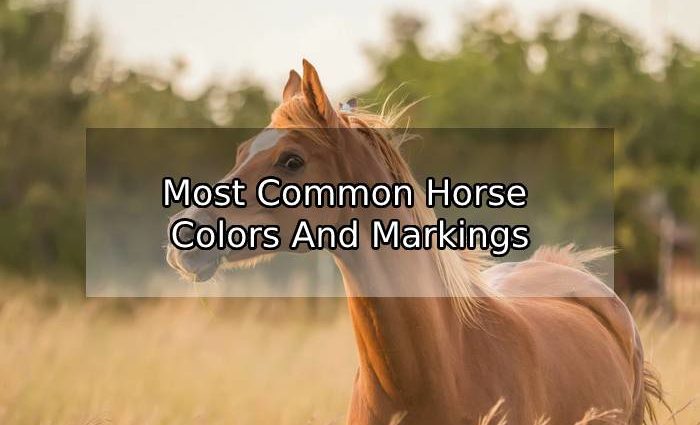During a lesson, your riding instructor may ask you to go into the paddock area and retrieve your lesson horse. It’s unlikely that each horse will be wearing a name tag, so your instructor will use equine terms to describe it to you. For this reason, it’s important to know horse colors, markings, and some of the common breeds.
Table of Contents
Horse Colors
A horse’s points—its mane, tail, ears, and legs—are typically one or more of the following primary colors:
- Bay (reddish brown)
- Black
- Brown
- Chestnut (reddish)
- White
Other horse colors are either secondary colors or dilutions of the primary colors. In addition, some horses have a dorsal stripe that runs along the spine.
Color Terminology
Horses tend to be found in specific patterns of colors across their five points. These horse “color schemes” are described using special terminology. The most common include:
- Bay: Light brown to dark brown body, black points
- Black: Black body, black points
- Brown: Dark brown body, dark brown points
- Buckskin: Tan/yellow body, dark points, no dorsal stripe
- Chestnut: Red body, legs, ears; mane and tail may be lighter, darker, or same shade
- Dun: Red/tan/yellow body, dark points, dorsal stripe
- Gray: Mixture of black and white hair on body and points
- Grullo: Mousy-gray body, dark points, dorsal stripe
- Pinto: Splotches of white on a base color, or splotches of color on a white base
- Palomino: Tan to copper body and points except for white mane and tail
- Roan: Dark hair interspersed with white—can be strawberry roan (chestnut/white), red roan (bay/white), or blue roan (black/white)
- White: White body, points, pink skin
Face Markings
Horses can be identified by the color patterns on their faces, which are described using specific terminology. Some of the more common face markings include:
- Star: A patch of white between the eyes that does not extend down the face or over the eyes
- Snip: A patch of white on the muzzle (the lower end of the nose) that does not extend up the face
- Stripe: A thin strip of white that runs down the face but does not cover the width of the nose
- Bald face: A patch of white that covers the entire face, including one or both eyes
- Blaze: A thick strip of white that runs down the face and covers the width of the nose without extending onto the eyes
Leg Markings
Horses can also be identified by the color patterns on their legs. Here are some of the more common leg markings.
- Coronet: White covers the coronet (just above the hoof) without extending up onto the pastern (the part of the leg just above the hoof)
- Pastern: White covers the hoof to the pastern without including the fetlock (ankle area)
- Sock or half-stocking: White covers the hoof to the fetlock
- Stocking: White covers the hoof to the hock (knee)


Comments are closed, but trackbacks and pingbacks are open.